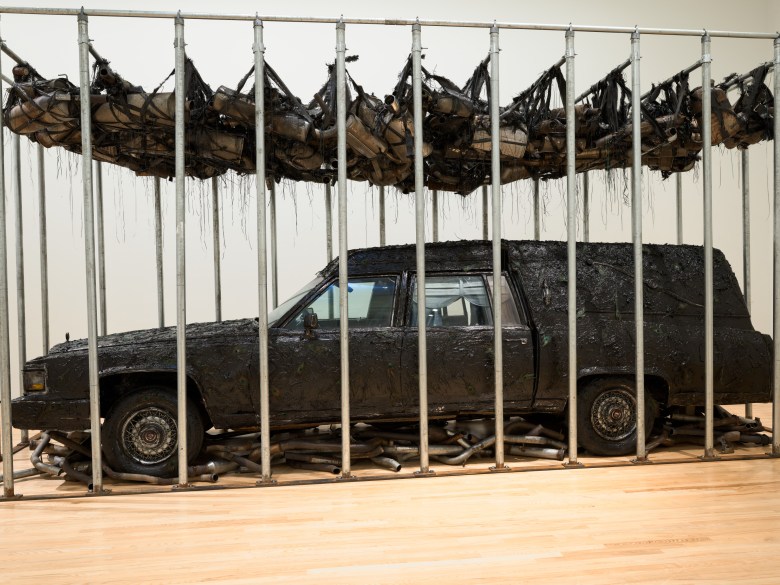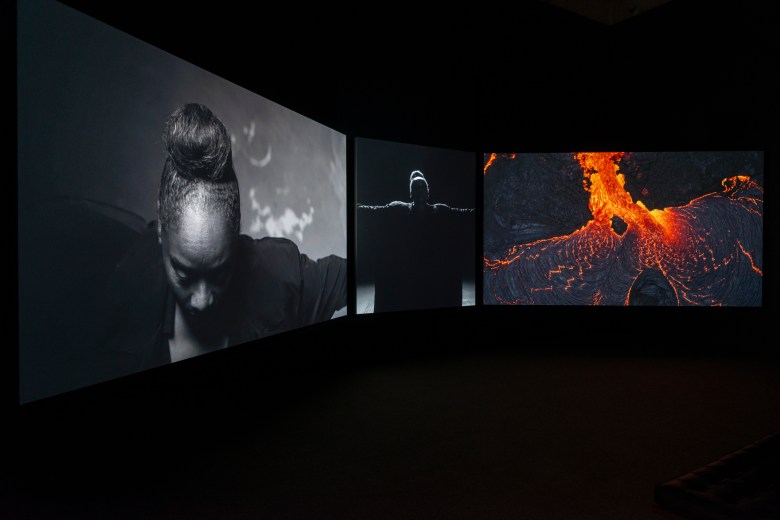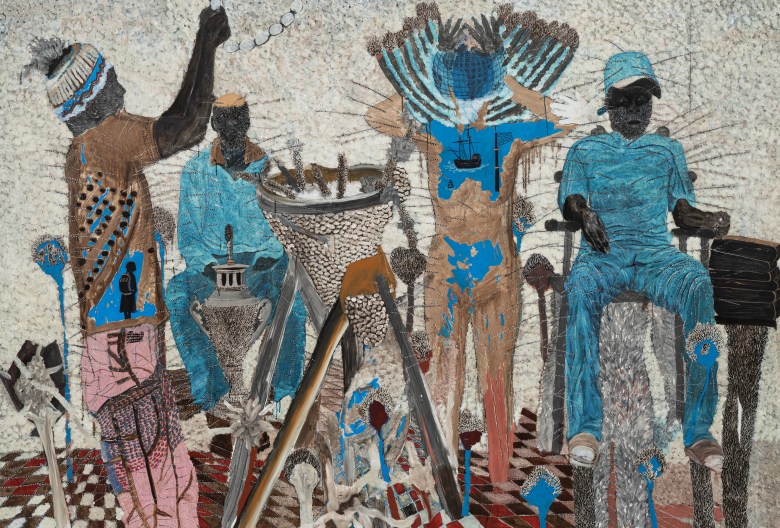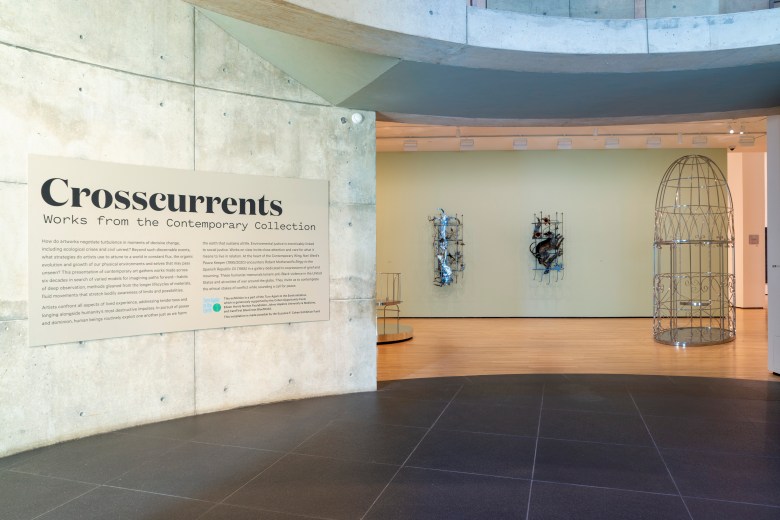Being human does not make a person humane. Humanity is learned and modeled. It aligns with love, dignity, and the protection of all species on this planet we call home. Some people love their pets more than they love their neighbors. Others love their egos more than they love progress. This explains why although countless communities in every generation have committed themselves to creating a better world, their progress can be easily unraveled. The hope of a brighter future has to be intentionally strived toward. It requires all of us to be better. Though many will stubbornly reject this premise, we can honor the efforts of previous generations by heeding the lessons they learned and found solutions for. If we do not uphold a standard of power that is equitable, love-aligned, and protective of sovereignty, the possibility of a sustainable future becomes untenable.
In times of crisis — like American democracy has encountered since its establishment due to its dogged repression and regression of civil liberties, devaluation of education and healthcare, degradation of Indigenous land sovereignty, and erosion of environmental protections — it has historically been the underdogs, the outliers, the artists, the writers, the dreamers, and creatives who have advanced fluid, rhizomatic, and radically imagined paths forward.
In times of crisis — like American democracy has encountered since its establishment due to its dogged repression and regression of civil liberties, devaluation of education and healthcare, degradation of Indigenous land sovereignty, and erosion of environmental protections — it has historically been the underdogs, the outliers, the artists, the writers, the dreamers, and creatives who have advanced fluid, rhizomatic, and radically imagined paths forward. Now on view at the Baltimore Museum of Art, “Crosscurrents: Works from the Contemporary Collection,” reviews the intimate and unifying creative interventions engaged by artists who have worked at the intersections of social and environmental justice. Co-curated by Jessica Bell Brown, executive director of the Institute for Contemporary Art at Virginia Commonwealth University; Cecilia Wichmann, curator and department head of contemporary art at the BMA; and Leila Grothe, associate curator of contemporary art, Crosscurrents forwards the mission of the “Turn Again to the Earth” initiative, which celebrates the museum’s 110th anniversary by centering conversations and action around climate change. The dynamic exhibition spans the BMA’s Contemporary Wing. Companion exhibitions aligned with its theme will continue through January 2026.

“You’ll see that some of the work [and] themes are very directly anchored in ecology, where the artist is making a direct statement about environmental justice. But much more often, you’ll see a more expansive relationship with that subject, thinking about environmental justice and social justice as entwined,” Wichmann shared while she and Grothe led me through a personal tour of the exhibition.
“If there’s one unifying, shared hope and dream in the installation, it’s learning from artists about when and how to pay attention. [It’s] attunement and contemplation, calling into this idea that in some cases, artists are thinking with materials and learning about longer elemental life cycles,” she added.
“Crosscurrents” is an expansive effort featuring more than 60 works by internationally recognized and regionally championed artists including Abigail Lucien, Fred Wilson, Shahzia Sikander, Ana Mendieta, Ed Clark, David Driskell, Sam Gilliam, and Nari Ward.
“Crosscurrents” is an expansive effort featuring more than 60 works by internationally recognized and regionally championed artists including Abigail Lucien, Fred Wilson, Shahzia Sikander, Ana Mendieta, Ed Clark, David Driskell, Sam Gilliam, and Nari Ward. The exhibition celebrates a broad range of material approaches, inviting audiences to encounter mosaics, sound, sculpture, videos, ceramics, and paintings in dialogue with each other. Nearly half of the works are on view for the first time.

The exhibition has three entrances. If you enter through the primary rotunda of the BMA’s Contemporary Wing, past Henry Moore’s permanent installation, “The Three Rings” (1966), you will be greeted by a towering steel cage, intricately welded by Haitian American artist Lucien, entitled “Zouzou’s Ballad” (2025). The cage has no visible entry or exit. A solitary swing dangles stoically at the center. Its invisible sitter is inspired by the late activist, actress, and singer Josephine Baker’s starring role in the film “Zouzou” (1934). In a particularly troubling and beautiful scene from the movie, Baker performs as a caged bird. Nearly naked, loosely adorned in ornamental bird feathers, she sings the song “Haiti,” a sorrowful ballad about longing, displacement, and return. Lucien’s gilded cage has no song and no sitter, and the absence of the body enunciates the multifaceted intention of all structures as portals of expansion or contractive prisons. Baker’s life and career was ever-entangled in parodying and being exploited by exoticism and stereotypes about Black women. “Zouzou’s Ballad” is one of 10 new sculptures designed by Lucien for an ongoing series entitled “Under Other Skies,” commissioned by the BMA for the “Crosscurrents” exhibition.
Every gallery is engaged in its own powerful discourse that draws clear corollaries between intimate interiority and the climate as a sociopolitical and environmental landscape that affects communal experiences.The immensity of the exhibition and the broad range of artist interpretations around those themes sets “Crosscurrents” apart from most exhibitions on view at this time. Governmental agencies, museums, and educational institutions have been threatened for elevating discourse about environmental and social justice. Wandering through the galleries is both deeply moving and startlingly sobering. Creations in the exhibition span nearly 40 years, reminding us all that artists have been grappling with these ideas and pushing for broader awareness for many generations.
To clarify the ebb and flow of each artist’s approach in dialogue with other artists’ interventions, the curators sectioned the show into seven prominent themes: Structures, inspired by theorist and Third Text founder Rasheed Araeen, considers patterns and interconnected relationships in environments; Elemental, which highlights the ways force manipulates elements in the natural world; Groundswell, which acknowledges artists who engage ideas of dissent, protest, and direct action; Elegy, which ponders individual and collective responses to mourning and grief; Cohabitation, which elevates a conception on Baltimore as an ecology, lifts up artists directly and indirectly connected to the city, and queries the impact of humans in environments; Expanse, which conjures ideas about contemplative and inspired approaches to materiality; and Migrations, which investigates the migratory relationship between materials and humans around the globe and that effect on material, humanity and the climate. Touring all of the galleries at a fairly leisurely pace took around two hours. Anywhere you choose to start is sure to be inspiring.
For those interested in lens-based mediums, pop into the screening rooms to see “Wolfgang Staehle: Eastpoint” (September 14, 2004), Justen Leroy’s three-channel video installation, “Lay Me Down in Praise” (2022), iconic archival footage of the performance “Blood Inside Outside” (1975) by Mendieta, or Sky Hopinka’s “Dislocation Blues” (2017). If you are moved by artists who repurpose materials to craft unconventional sculptures, installations, and fiberworks, spend time with Ward’s “Peace Keeper” (1995/2020), Brandon Ndife’s “Unfurled” (2022), Thomas Hirschhorn’s “Chandelier with Hands” (2006), Rose B. Simpson’s “Heights II” (2022), or Elias Sime’s “Tightrope-Familiar Yet Complex 4” (2016). Seeking scathing commentaries on the constitutional crisis? View Bruce Nauman’s “Raw War” (1970), Kiyan Williams’s, “How Do You Properly Fry An American Flag” (Study) (2020), Mark Thomas Gibson’s “Biden’s Entry Into Washington 2021” (American Portrait as Landscape) (2021), or Soledad Salamé’s “Gulf Distortions I-XII” (2011).

Over the last decade, the BMA has relentlessly advocated for dynamic reflections in its collections and exhibitions that accurately and courageously portray diverse perspectives in our world. Crosscurrents continues that momentum and clarifies that this work is not a trend; it’s a mission.
“I have a lot of pride in the ways that the institution is responding with nimbleness to the way artists are working today and the ways in which we as an institution are able to come out and really showcase some of the complexity of contemporary art,” Grothe said.
“Thinking about cumulative energy in our work and in our method,” Wichmann added, “I think we’re able to create the installations that you see here because of sustained work, collectively, over many years. It is galvanizing to remind ourselves of that, and to keep going.”

